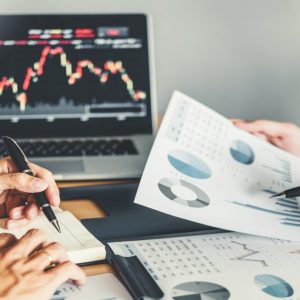
In today’s uncertain environment, there are more factors than ever before that organisations need to consider when managing risk in their supply chains, writes Alex Saric, Smart Procurement Expert at Ivalua.

Whether it’s mitigating the impact of Coronavirus, the long-term effects of Brexit or the effects of global tariff changes, organisations need to have contingency plans in place.
However, it’s almost impossible for organisations to anticipate every type of risk, and the only way to prepare for every eventuality is to ensure flexibility across the supply chain. Exposure to risk typically stems from a lack of forward planning – if one supplier or region is suddenly unable to supply your business, then you need to be flexible enough to find alternative sources. Ideally, alternate sources should already be in place, and ones with a diversified risk profile. But in order to plan in this level of detail, organisations must have a complete view of all suppliers and spend to understand the various scenarios. This requires having the right skills, tools and processes in place to be able to review, onboard and shift suppliers quickly, giving the flexibility needed to adapt to any situation.
Keeping up With Your Suppliers’ Suppliers
Many organisations consider themselves relatively well-prepared for risk, as they have a good degree of knowledge about what’s happening with their tier one suppliers. This is a good start, and solid tier one supplier relations can be vital when you need to adapt quickly and keep production on track. Take organisations like Apple, who keep a close relationship with manufacturers such as Foxconn, and as a result were able to identify supply problems on products like the iPhone and AirPods, limiting customers purchases on online stories until normal operations could resume.
However, most organisations would be hard pressed to explain what’s happening to suppliers or contractors working with them in their extended supply chain. In fact, research found 77% of UK businesses face challenges gaining complete visibility into suppliers and activities, making it harder to predict supply chain risk, especially among “invisible” lower tier suppliers.
Without the ability to see what’s happening across the entire supply chain, organisations will have a hard time deciding the next best course of action during times of unexpected risk, which can have damaging consequences. A recent report published in the Harvard Business Review demonstrated this, showing that thousands of factories, warehouses and other operational facilities closed during the Wuhan’s Coronavirus quarantine period, which saw production grind to a halt. The most severely affected industries were those with the most extended supply chains, such as the consumer technology and automotive industries, who were left scrambling to identify which of their tier two and three suppliers are affected. A recent report by Dun & Bradstreet found that 938 of the Fortune 1000 have Tier 2 suppliers in the Wuhan region of China.
Data from Every Corner of the Supply Chain
For most organisations, the biggest barrier to visibility is that they can’t gather data on every supplier, because it is stored across multiple locations and formats, making insights difficult to obtain. As a first port of call, organisations need to make sure they are able to break down data silos and bring together information from multiple sources, creating a complete picture of individual suppliers and the overall supply chain. By tying together supplier data, the latest activity across the supply chain and external factors that may affect the business, such as regulatory updates and geopolitical shifts, organisations will be much better placed to make informed decisions in times of increased risk.
Once this data is readily available and can be viewed in a single location, organisations need to develop contingency plans for various types of risk, ensuring that this takes alternative supply options into account, allowing organisations to act fast to keep supply chains running. If not, they risk wasting days or even weeks scrambling to pick up the pieces after crisis strikes, which will see the business grind to a half. This can drastically impact a company’s share price and leave its reputation in tatters.
Expecting the Unexpected
The procurement department can be vital to gaining a complete picture of a company’s supply chain, and give more certainty to an organisations ability to adapt. Smart procurement solutions can bring data from the business, suppliers and third parties, linking information to a single supplier record for a 360-degree view of what’s happening in near real-time. This arms organisations with the tools to make informed decisions, put failsafe measures in place and find replacement suppliers quickly in the event of a sudden failure.
Not only does a smarter approach to procurement give added visibility help to identify risks ahead of time, but it improves communication and collaboration with suppliers. This means that organisations can work alongside suppliers more proactively to identify and minimise risk together. Additionally, when a crisis hits, shared processes, tools, and data can reduce the impact and the time it takes an organisation to recover.
It’s vital that organisations can adapt their supply chains when they experience unexpected risks. By ensuring complete visibility across the supply chain, organisations will be flexible enough to identify risks that could impact availability of supply or their brand reputation as and when it appears. This will help to avoid supply shortages, mitigate any financial damage as firms roll with the punches in an increasingly complex landscape.






